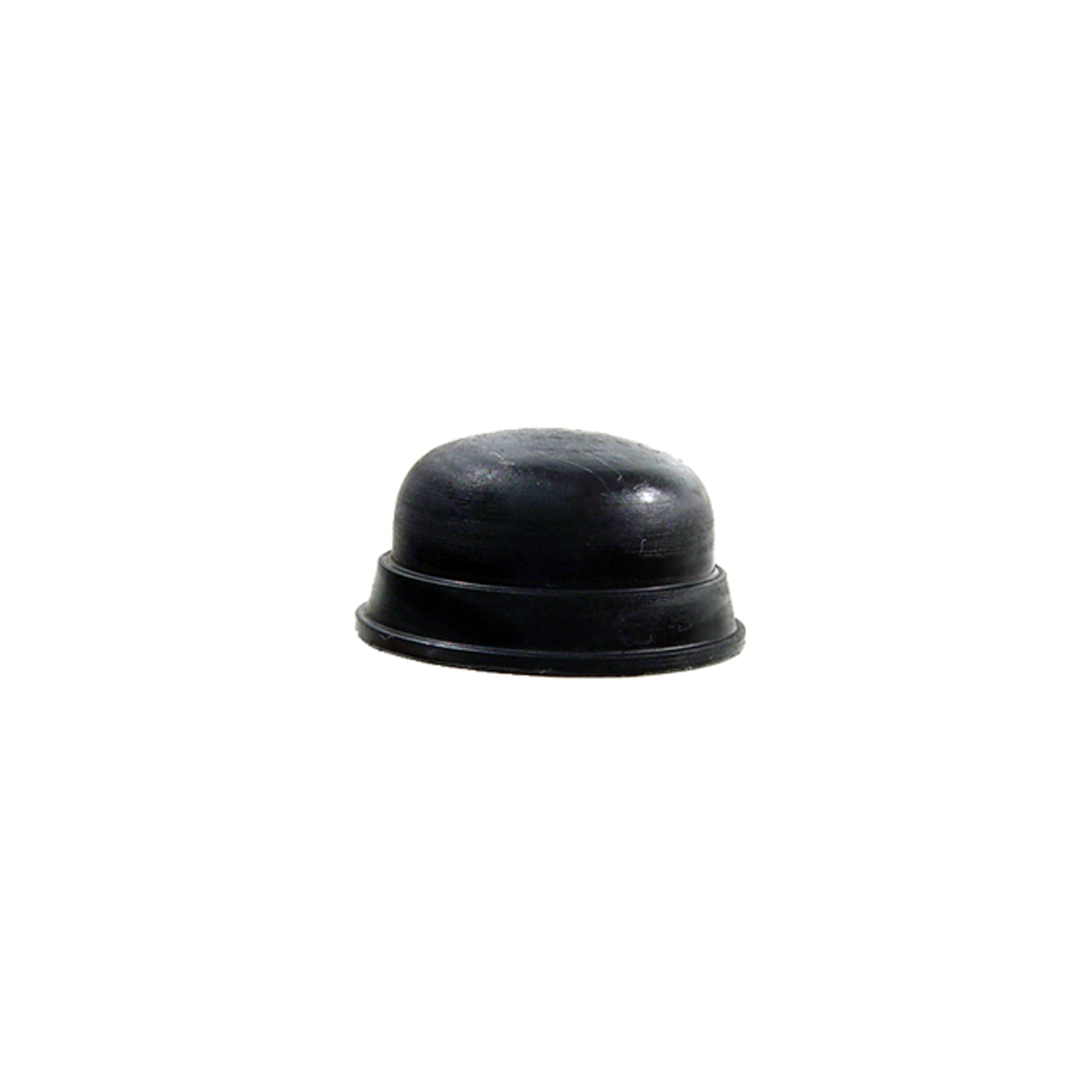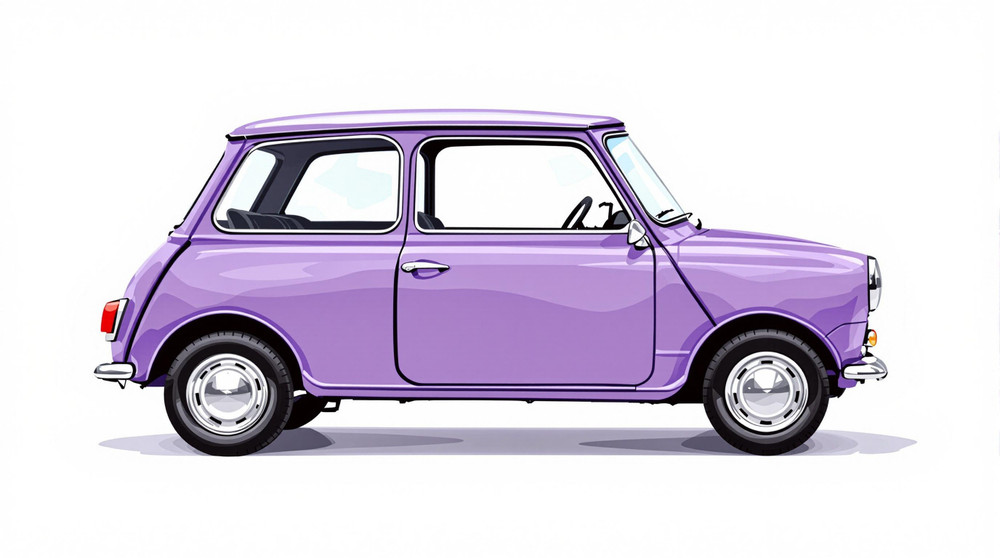Image of 1962 Austin Mini, Note: These illustrations use artistic license and may differ from actual historical models.
Performance Metrics
Fundamental Metrics
Emotional Appeal
MMP Rating
| Engine Specifications | |
|---|---|
| Engine: | A-Series I4 |
| Displacement: | 848 cc |
| Horsepower: | 34-55 hp |
| Torque: | 44-52 lb-ft |
| Compression Ratio: | 8.3:1 |
| Ignition System: | Distributor and coil |
| Cooling System: | Water-cooled |
| Performance Specifications | |
| 0-60 Time: | 26.5 seconds |
| 1/4 Mile Time: | Not available |
| Top Speed: | 72 mph |
| Transmission and Drive | |
| Drive Type: | FWD |
| Transmission Type: | 4-speed manual |
| Fuel and Efficiency | |
| Fuel System Type: | Carburetor |
| MPG: | 40 mpg |
| Dimensions and Brakes | |
| Brakes: | Drum brakes |
| Wheelbase: | 80.0 in |
| Weight: | 1,410 lbs |
Note: Specifications for classic cars are given to the best of our ability, considering the limited and variant data available.
The Quintessential Classic: 1963 Austin Mini
The 1962 Austin Mini is not merely a car; it's a cultural icon that encapsulates the ingenuity of post-war British automotive design. Born out of necessity during the Suez Crisis, which demanded fuel-efficient vehicles, the Mini emerged as a marvel of space-saving engineering under the guidance of Sir Alec Issigonis. Its compact dimensions belied an interior spacious enough to comfortably seat four adults, a feature that would redefine small car design for generations to come. The Mini's charm was so pervasive that it quickly transcended its utilitarian roots to become a symbol of 1960s British pop culture.
Design and Innovation
The exterior of the 1962 Austin Mini is instantly recognizable with its pert, boxy silhouette and cheeky demeanor. The car's diminutive stature, at just over 10 feet long, was complemented by a transverse engine front-wheel-drive layout that was revolutionary at the time. Inside, the Mini was surprisingly uncluttered, with sliding windows and large door pockets to maximize space. The quality of materials was modest yet durable, reflecting its economy-class intentions. Technologically, the Mini boasted a unique rubber cone suspension system that contributed to its go-kart-like handling.
Color options ranged from muted tones to vibrant hues reflecting the era's optimistic spirit, with shades like Tartan Red and Surf Blue being particularly popular. The most iconic body style remains the two-door saloon, though estate versions and panel vans were also offered to suit various needs.
Historical Significance
The Austin Mini's impact on automotive design is undeniable; it introduced features like front-wheel drive and a transverse engine layout that are commonplace today. Its approach to space efficiency influenced countless small cars that followed. Moreover, the Mini became a classless automobile, equally beloved by celebrities, royalty, and the public alike.
Performance and Handling
Performance-wise, the 1962 Austin Mini wasn't about raw power; it was about agility and efficiency. With a top speed around 75 mph and a modest 0-60 mph time exceeding 20 seconds, it wasn't going to win drag races. However, its handling was where it shined—nimble and responsive on twisty roads or bustling city streets. The driving experience was visceral; drivers could feel every nuance of the road through the steering wheel and seat.
Ownership Experience
The Mini was versatile: an economical daily driver, an occasional show car, or even a competitive rally vehicle with modifications. Its simplicity meant that maintenance could often be performed by owners themselves. However, British cars of this era had their quirks, and rust could be an issue for neglected examples.
Fun Facts
The Mini has been featured in numerous films and owned by various celebrities including The Beatles and Steve McQueen. It held records for fuel economy and production numbers within Britain. Criticisms often centered on its cramped engine bay which made certain repairs challenging.
Collector's Information
Today, an original 1962 Austin Mini in good condition can fetch anywhere from $15,000 to $40,000 depending on provenance and condition. Approximately 5 million Minis were produced during its initial run until 2000; however early examples like the '62 are increasingly rare. The market trend for classic Minis is appreciating as enthusiasts seek out these charming pieces of automotive history.
Conclusion
In summary, the 1962 Austin Mini is much more than a small car—it's an enduring legacy of British innovation and cultural significance. Its clever design revolutionized automotive engineering while capturing hearts across social divides. For collectors or enthusiasts seeking a tangible piece of motoring history that continues to delight and inspire—the Austin Mini stands as a true classic gem.
1962 Austin Mini Catalog of Parts
 1962 Austin Mini Starter Solenoid Button Cover. Perfect reproduction. Each-RP 1Starter Solenoid Button Cover. Perfect reproduction. Each
1962 Austin Mini Starter Solenoid Button Cover. Perfect reproduction. Each-RP 1Starter Solenoid Button Cover. Perfect reproduction. EachWhy Choose Metro?
For over 100 years, Metro Moulded Parts has been the pinnacle of quality in classic car restoration parts. Our commitment to precision and authenticity in every component ensures a perfect fit and an OEM-level appearance.
- Expert Craftsmanship & Quality: Each part is a testament to our dedication to reliability and perfection, crafted from original designs and thoroughly tested.
- Advanced Technology: We use cutting-edge techniques to create flawless, long-lasting parts that surpass others in performance.
- SuperSoft Sponge – The Ultimate Door Seal: Not only are our door seals 30% softer than competitors', but they're also guaranteed to never leak. They effectively reduce wind and road noise, enhancing your classic car's comfort and driving experience.
- Proudly American: Our parts are a product of American craftsmanship, made in the USA with a spirit of excellence and heritage.
- Unrivaled Warranty: We back our products with a 30-year industry-leading warranty, a testament to our confidence in their quality.
Join us in preserving the legacy of classic cars with parts that are crafted for perfection, not just made.

